A central part of the Southeast Collision Conference in May included the Collision Professional Repairer Education Program (P.R.E.P.). A variety of presentations took place for shop owners, managers and industry professionals, covering topics such as setting up a body shop of the future, the root sources of refinish work contamination, repair planning and workshop organization, advanced driver assistance systems (ADAS) calibration considerations and how to navigate the evolving landscape of AI in collision repair.
Stay Humble, Stay Hungry
Collision Advice owner Mike Anderson emphasized the importance of ensuring quality standards are being met in body shops. He said quality pertains to taking care of customers — including the cleanliness of the office, production area and the facility — as well as quality of the estimate, documentation and repair.
He shared shop statistics and insurance trends and said that customer pay is growing.
“Consumers are carrying higher deductibles and are reluctant to file a claim due to rising premium costs,” he explained.
Total losses have increased and the average shop’s backlog has slowed down to a couple of days — less than a week in most markets.
In light of these trends, Anderson encouraged owners and managers to stay “Humble and Hungry” in all aspects of their businesses and focus on customer interaction.
“We must get back to the basics, looking and monitoring repair order count month to month and month compared to the prior year,” he stressed. “It’s time to dust off the old playbook; it’s still relevant today. We must not get calloused to the vehicle owner. We MUST stay humble, stay hungry and be patient.”
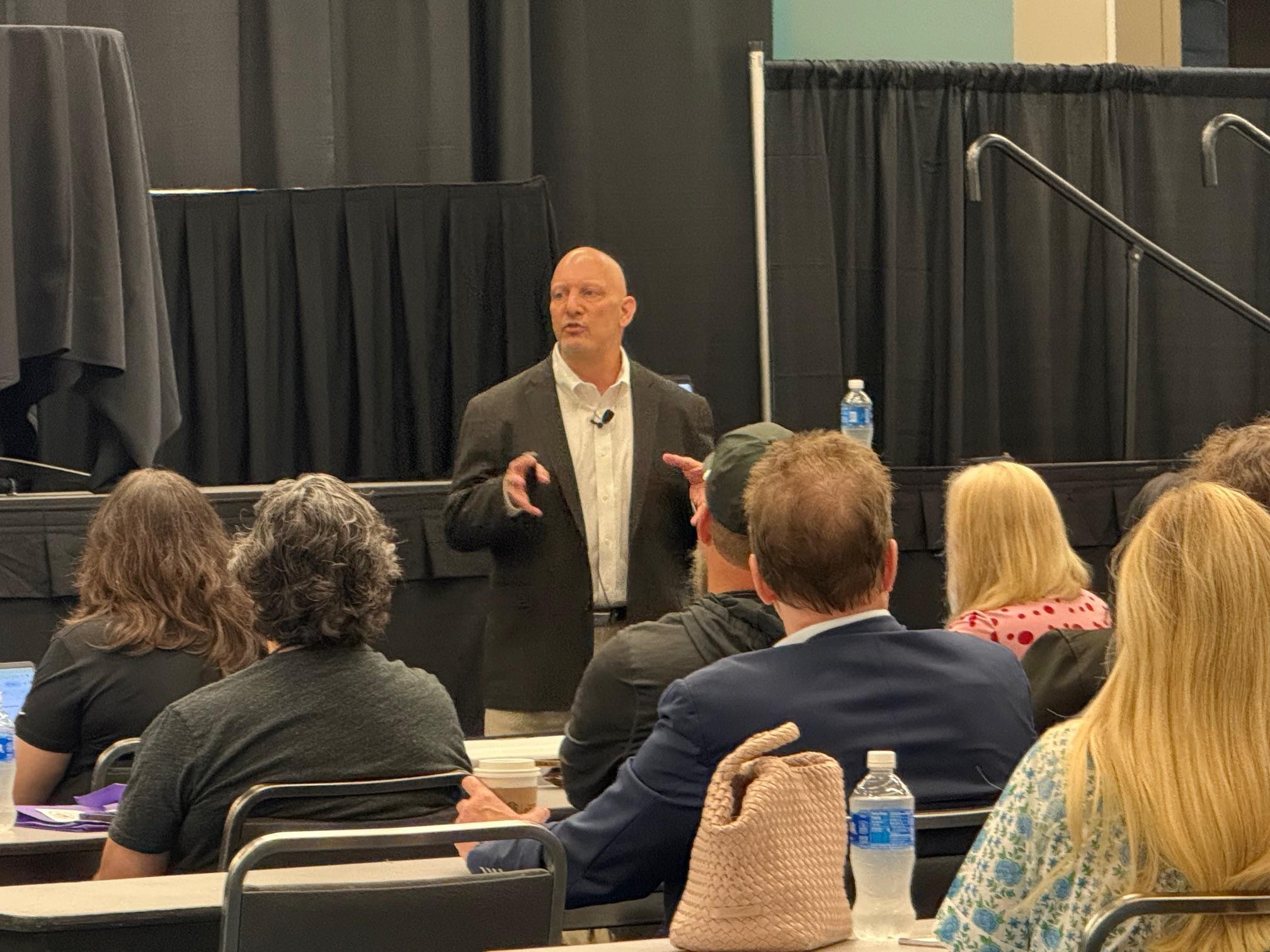 Mike Anderson presented "Stay Humble, Stay Hungry."
Mike Anderson presented "Stay Humble, Stay Hungry."
Regarding OEM trends, Anderson mentioned the growth of vehicle owner subscriptions, including software-as-a-service (SaaS) and subscription-type leasing.
By 2030, Anderson said, digital services could generate as much as $1.5 trillion in revenue for the global industry, rising to $3.5 trillion, amounting to 40% of automotive industry revenue by 2040, according to Accenture.
Anderson pointed out customers increasingly want a more personalized experience and the vehicle of the future is more than just transportation.
In terms of customer experience, Anderson acknowledged response time matters. “Where there is no communication, negativity always fills the void,” he said.
The new key performance indicator, according to Anderson, is capture rate. He recommended repairers focus on customer pay and follow up on unscheduled estimates and address scarcity. He encouraged attendees to embrace AI and to “know your financials.” He commented that insurer pressure will increase and said estimate accuracy matters.
During the Southeast Collision Conference, Anderson also moderated a panel focused on safety inspections and highlighted the importance of making them a priority in the repair planning process.
“Most OEMs, if not all, will have a variety of safety inspections for vehicles that have been involved in a collision,” noted Anderson. These include identifying all safety components that need to be inspected, removed or replaced, and parts.
He talked about the importance of inspecting supplemental restraint systems (SRS) and shared that of those who negotiate for this, 35% are paid “always” or “most of the time.”
“OEM procedures vary based on OEM year, make and model,” he explained. “OEMs will often have inspections when the airbag deploys, but also when it doesn’t deploy.”
He said ALLDATA attempts to put these under “Repairs & Inspections Required After a Collison;” however, he highly recommended searching other areas to confirm.
Additional topics he covered included steering columns, seat belts, body structure and steering gear assembly.
Advancements in Vehicle Technology
During the Southeast Collision Conference, a panel was held, moderated by Kyle Bradshaw, president of CCA and director of fixed operations at K & M Collision. Participants included Bud Center, director of technical products and curriculum at I-CAR; Barry Dorn, vice president of Dorn's Body and Paint; John Eck, GM’s senior manager of service solutions; Casey Hamilton, senior manager of certified collision networks at Rivian; and Dane Rounkels, wholesale parts marketing national manager at American Honda Motor Company.
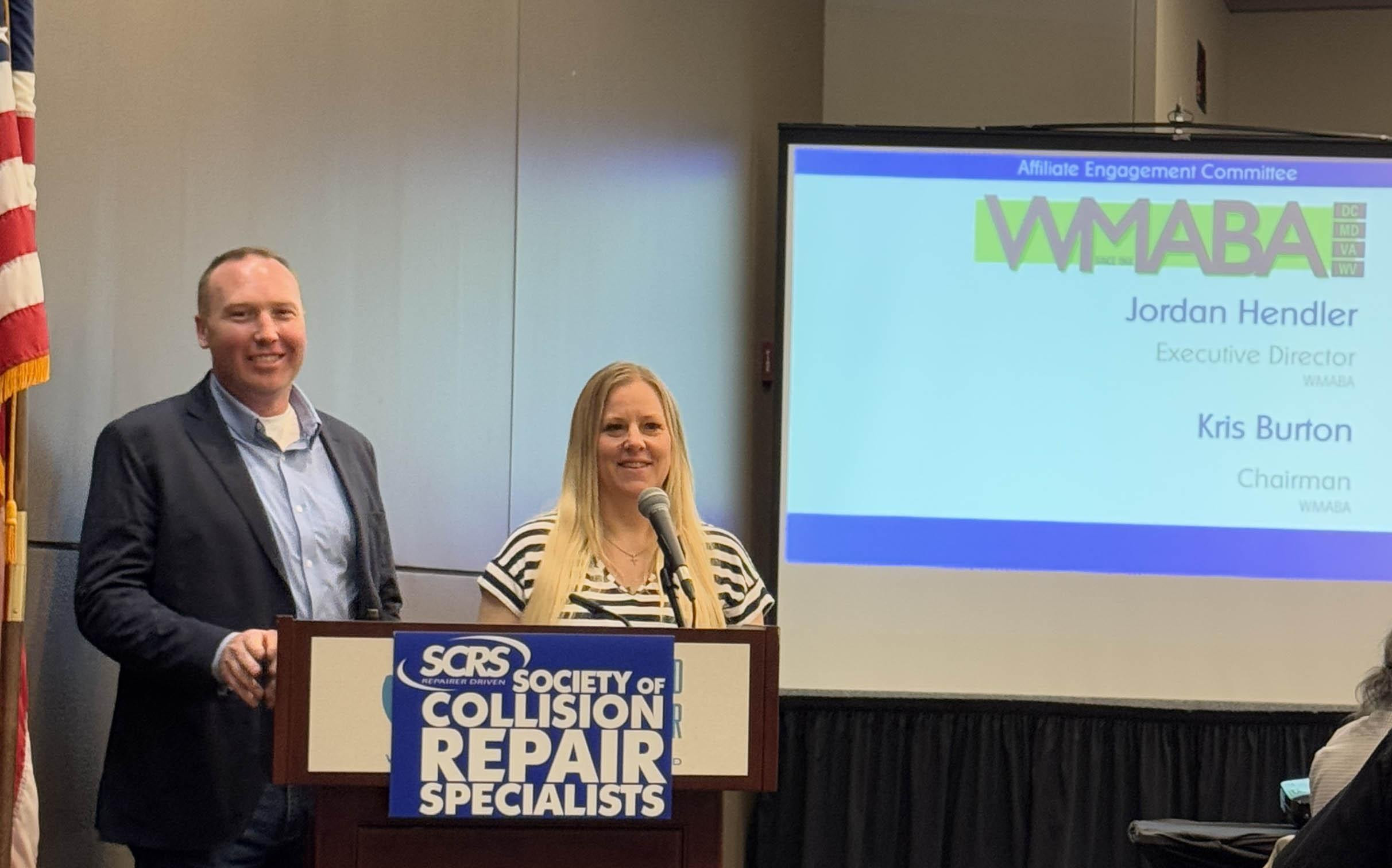 WMABA President Kris Burton, left, and Executive Director Jordan Hendler, right.
WMABA President Kris Burton, left, and Executive Director Jordan Hendler, right.
The panelists talked about new advancements in vehicle technology and procedures with a focus on industry pitfalls with ADAS calibrations and pre- and post-scans.
“One of the biggest highlights from the discussion was the consensus around the urgency of proper documentation and adherence to OEM repair procedures, especially as vehicle technology continues to evolve at a rapid pace,” explained Bradshaw. “Each panelist brought a unique perspective, but they all echoed the same message: when it comes to ADAS calibrations and pre- and post-scans, there is zero room for shortcuts. Doing it right isn’t just about quality — it’s about safety and liability.”
Bradshaw said the panelists also touched on a common industry pitfall: underestimating how drastically new technology impacts even the most basic repairs.
“As vehicles become more sophisticated, the gap between ‘what was once acceptable’ and ‘what is now required’ is widening,” noted Bradshaw. “That’s why discussions like these are so critical and sharing this information industry-wide is essential.”
He stressed the importance of technicians, estimators and repair planners needing ongoing access to accurate, up-to-date knowledge so they can adapt and protect both their customers and their businesses.
“When we keep communication flowing between shops, OEMs and training providers, we all rise together — and ultimately, the consumer wins,” he added.
Death of the Estimator Role
Andrew Batenhorst, body shop manager at Pacific Collision Center in Glendale, CA, shared with Southeast Collision Conference attendees insight on how to set up a body shop of the future. Batenhorst explained why the legacy estimating role is causing severe damage to industry operations and discussed some of the pitfalls associated with the estimator status quo.
These included no time to research repair instructions and not being present for the vehicle’s disassembly, resulting in missed labor, parts and materials. Other pitfalls he mentioned were not having enough time to defend a repair plan to insurance adjusters and administrative tasks that bring no value to producing an accurate repair plan, like ordering parts, managing dealer sublets and more.
He also provided tips on how to design an effective, segmented repair plan team, such as creating a customer service representative (CSR) role or having a repair planner assistant handle all the non-value-added tasks a repair planner is currently tasked with.
“This also can act as a feeder position for future growth within the body shop,” he noted.
Those who attended Batenhorst’s presentation learned how to design a personalized standard operating procedure (SOP).
“SOP development is widely misunderstood in this industry, and there is nothing more detrimental to morale and smooth production than an SOP that was not designed by and with the team that will be using it,” he emphasized.
To illustrate how to create an SOP, he asked three small teams to create an SOP for making a peanut butter and jelly sandwich.
“Each one called out different steps, different ingredients and different times needed to perform the steps,” he explained. “If you overlay this theory into the body shop, it's easy to see why these are needed to ensure a consistent and accurate work product is built as the end result of the SOP.”
He acknowledged the best part of the exercise was how the audience reacted. “One hundred people in the room were definitely rolling their eyes and laughing as it was ridiculous at first [with no context], but afterward, many people approached me and appreciated the comparison,” he said.
Avoiding the True Costs of Contamination
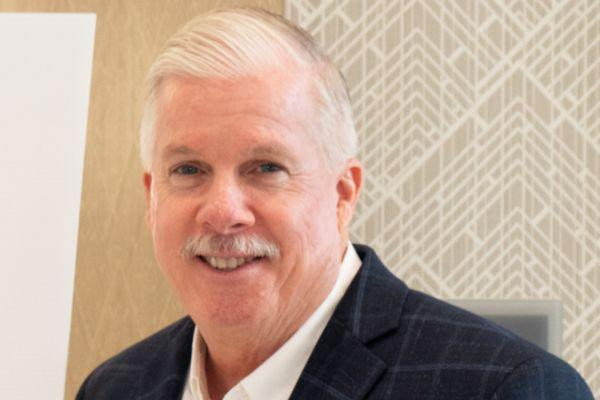 Rick Selover.
Rick Selover.
Rick Selover, national account manager for GARMAT USA Spray Booths and the founder and host of the Mind Wrench podcast, discussed the root sources of refinish work contamination that slow shop production. Selover explained how to identify and destroy the opportunities for surface contaminants to force reworking paint finishes.
“100% of jobs have some dirt and the majority of dirt is preventable,” noted Selover.
During his presentation at the Southeast Collision Conference, Selover addressed the three primary sources of dirt contamination that slow shop production: vehicles, booths and painters. He shared the high cost of rework, including employee retention costs, and talked about how to reduce the financial impact.
Selover mentioned the value of implementing paint department best practices and a preventative maintenance program to help address some of these challenges and provided tips on how to get started.
“Standard operating procedures (SOPs) build consistent results for the paint department process,” he said. “The goal is to identify and address issues before they escalate into costly programs, mitigate downtime, enhance operational efficiency and extend equipment lifespan.”
Streamlining Repair Planning
Danny Gredinberg, administrator for the Database Enhancement Gateway (DEG), and Kyle Motzkus, collision industry subject matter expert, addressed the growing challenge of information overload faced by today’s collision repairers and how to streamline repair planning.
With the increasing complexity of vehicle technology, repair procedures and data sources, they said efficiently managing information is crucial for accurate planning and, ultimately, shop profitability.
Gredinberg suggested shops use resources and information dedicated to the repair and employ an organized management system to house the information for everyone to easily access it.
“When using a third-party provider of information, you will need to ‘trust but verify’ the information being received,” Gredinberg advised. “Being a brand specialist by researching information pertinent to the vehicle being repaired also helps navigate the sources much quicker each time you research.”
He said in-house research is always best, but third-party sources can be helpful.
Gredinberg pointed out more thorough and accurate repair plans lead to better shop profitability.
“Naturally, when capturing all the required operations to perform the said repair, the dollar amount of the repair will be reflected accordingly,” he added.
Motzkus said their presentation at the Southeast Collision Conference stemmed from what he does on a day-to-day basis in the shop — in the trenches every day, trial-fitting what he teaches, creating new SOPs and tweaking/learning every day.
He said addressing information overload is all about one cliché: “Keep it simple, stupid.”
“That doesn't mean to keep your repair plan simple,” he shared. “That needs to be a bastion of well-thought-out words and parts prices. That means keeping it simple so that your information is consistent amongst all parties receiving it.”
He emphasized the importance of unity among three parties.
“The client needs to understand the why, the technician needs to know and understand the how... and the carrier needs to know the where and when,” he said.
He suggested shops think of information like a Venn diagram, which uses overlapping circles to illustrate similarities, differences and relationships. “All of it intersects in the middle so that everyone knows a little bit of everything... but everything remains malleable,” he explained.
Big Money in Workshop Organization
Lee Rush, manager of business consulting services for Sherwin-Williams, talked at the Southeast Collision Conference about Workshop Organization, an evolution of the 5S method of workspace organization. Workshop Organization refers to the systematic arrangement of the work environment, including both physical and digital spaces, to improve efficiency, focus and productivity. It includes methods to use people, space and equipment for the maximum bottom-line impact.
Rush recommended setting up a workspace that makes sense to the individual, and said workshop design is a critical component of an agile shop.
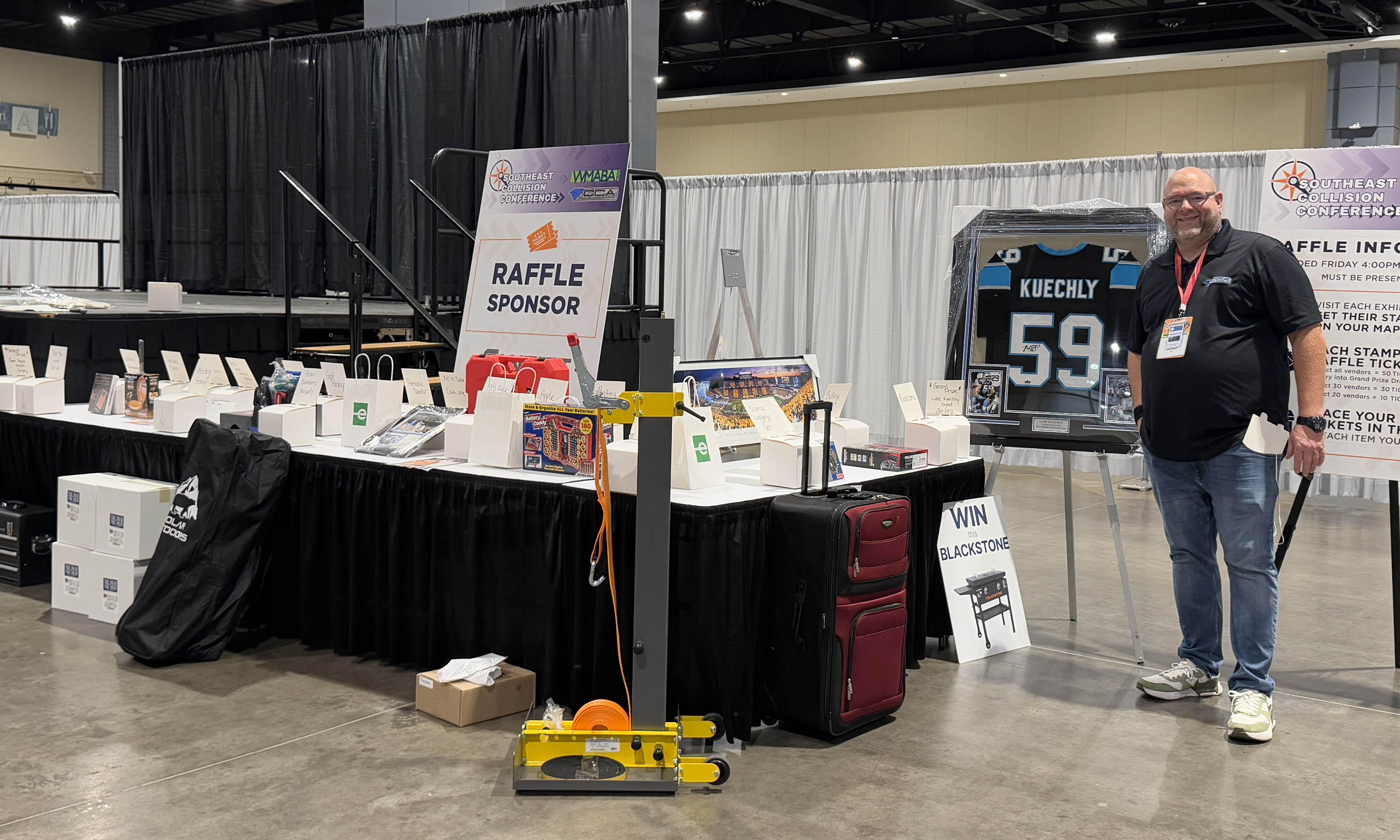 Josh Kent, executive director of CCA, with donated prizes given away during the conference.
Josh Kent, executive director of CCA, with donated prizes given away during the conference.
“An agile work environment can be structured in a way that makes it self-explaining, self-ordering and self-improving and can be managed more easily,” he noted. “An out-of-standard situation is immediately obvious and can be easily and quickly adjusted to optimize production outputs.”
He discussed some benefits of incorporating Workspace Organization, such as the flexibility to use space within a collision center to best adapt to constant and unpredictable change on the production floor.
Rush recommended organizing a workspace around skilled labor to ensure the greatest use of the technician’s output.
“The most important reason to organize your workspace is to optimize your labor,” he explained. “In an industry where current repair times are increasing, technicians spend less of their workday repairing cars.”
With an industry average touch time of 2.6 labor hours per day, Rush said skilled labor optimization is the industry’s best opportunity, not just for profitability but also for the quality of life that comes with it.
“Optimization of your labor is our future,” Rush shared. “It’s inevitable that profitability and survivability are going to force us into a more productive business model to thrive and prosper in an industry of constant and unpredictable change.”
He said the old model cannot sustain the evolving demands of the collision industry.
“By focusing on the optimization or utilization of your skilled labor, your shop can not only survive but thrive,” added Rush. “With constantly changing market dynamics, there is big money in workshop organization to ensure you optimize your labor.”
Taking the Blinds Spots Out of ADAS Calibration
Steve Dawson, regional manager at Hunter Engineering, provided insight on ADAS calibration. Dawson discussed the benefits of using a team approach when completing an ADAS calibration, whether it’s being conducted in-house or sublet. He also talked about many of the pitfalls and challenges in today’s shops when performing ADAS calibrations and how to address them.
These included evaluating space and environment needs and having the appropriate documentation to provide the details required to ensure the calibrations were completed correctly. He also suggested schedulers be aware of the different types of calibrations and determine if weather affects delivery due to dynamic calibrations.
To help shop owners and managers find the right technicians for their facilities, Dawson provided tips on the skills to look for, such as advanced scan tool diagnostics, programming and coding and reading wiring diagrams.
AI in Collision Repair
In a presentation at the Southeast Collision Conference about the use of artificial intelligence (AI) in collision repair, Taylor Moss, manager of the Repair Intelligence Team at OEC, provided a comprehensive exploration into the impact of the good, bad and ugly of AI in the industry. Attendees learned about the numerous benefits AI offers, including enhanced customer communication, operational efficiency and the potential to improve repair quality.
 Pictured, left to right, are Lauren Salvagno from CCA, and Chris Cage, Lizzy Greve and Tracy Stire from WMABA, who all assisted with show registration.
Pictured, left to right, are Lauren Salvagno from CCA, and Chris Cage, Lizzy Greve and Tracy Stire from WMABA, who all assisted with show registration.
Taylor addressed some of the significant challenges, such as high costs, cybersecurity risks and the complexities of workforce dynamics. He also covered some of the darker implications of AI’s integration, including the potential for increased fraud and the risks associated with an over-reliance on technology. Through case studies and forward-looking insights, participants gained knowledge to navigate the evolving landscape of AI in collision repair and learned the following tips:
Start small. Look for simple and small ways to start implementing or learning about AI for your business. If you go too big too fast, you risk causing problems, alienating staff, or other workflow disruptions. Starting small helps minimize the risk, which enables your business to row the boat towards AI for more efficiency boosts later.
Start now. Take steps to implement AI in your shop now. Don't wait for really big things to happen before you start implementing AI, but be very judicious about it.
Start smart. Don't try AI for the sake of AI. Make sure you have a problem you're facing that AI can help with.
Start together. Involve your staff with these decisions. It could feel like you're trying to replace them with AI if you don't talk to your staff. Ask them for advice, show them the tools that they might be using in the future and get their input on some of those tools.
Start protecting. Make sure you ask questions of the vendors who use AI. How is personal information / personally identifiable information (PII) handled? Are there plans in place? What things are they locking you into so you can't switch from them if you want to choose another provider at some point in the future, and what other lock-in mechanisms might the vendor have?
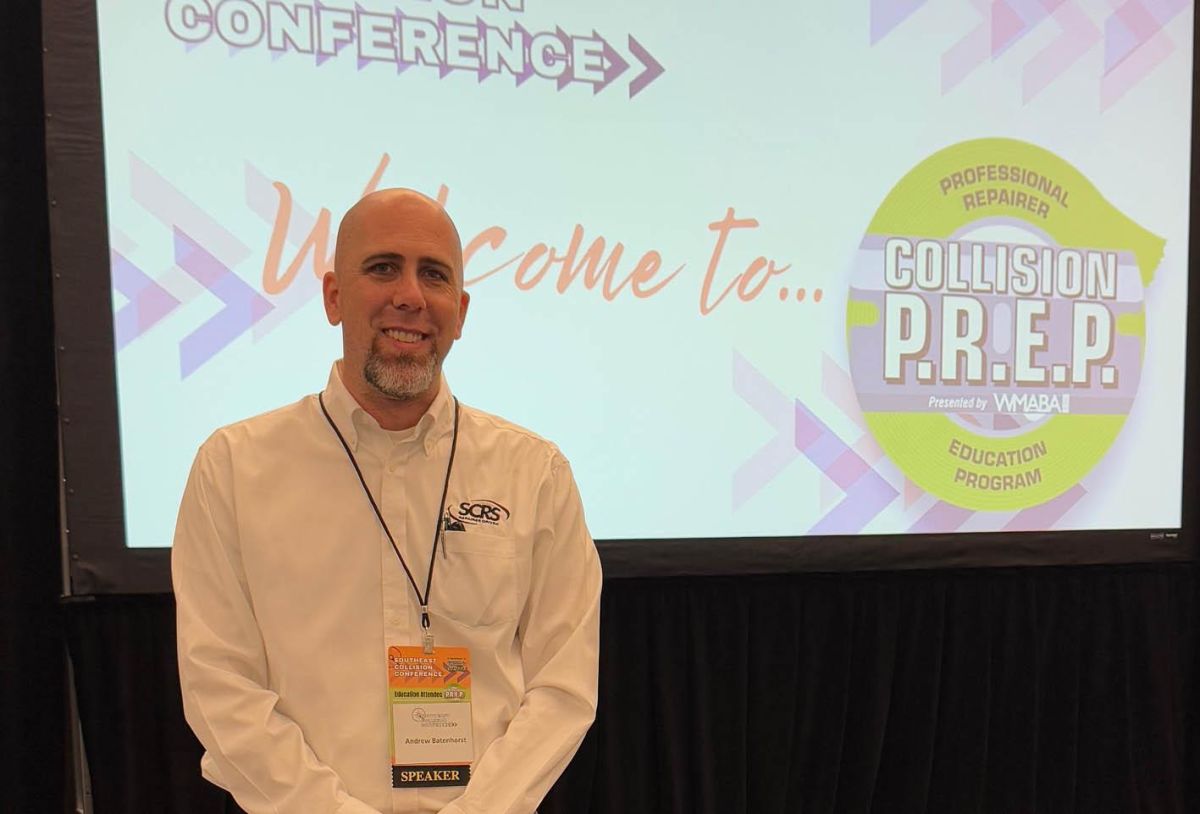














Stacey Phillips Ronak